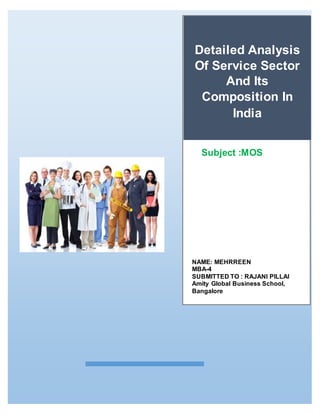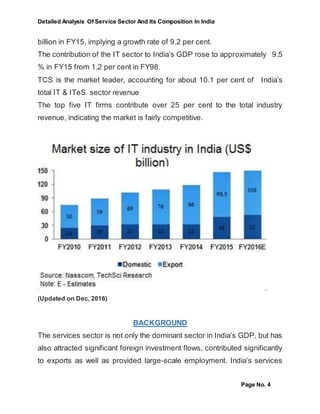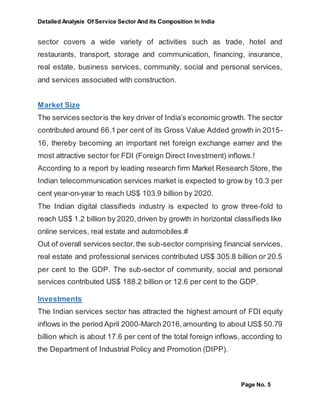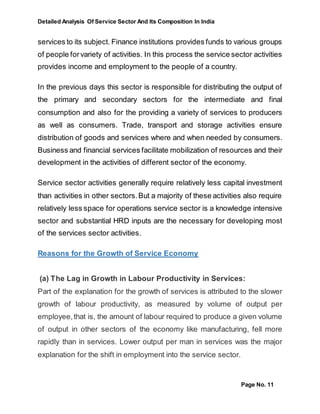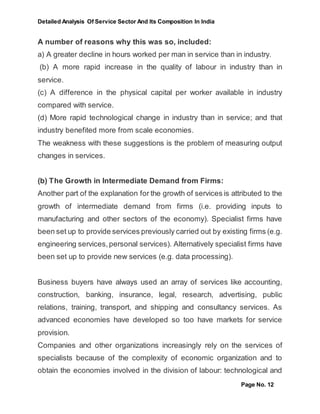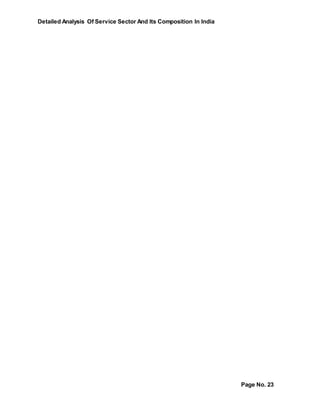This document provides a detailed analysis of India's service sector and its composition. It discusses that the service sector now accounts for more than half of India's GDP, marking a significant evolution of the Indian economy. The key services include trade, hotels, banking, insurance, real estate, transport, and business services. The service sector has seen rapid growth since the 1990s due to economic reforms and liberalization. While the sector has grown, it has not created employment proportionately. The document also outlines the various sub-sectors within services, trends in growth and investments, government initiatives, and the role of services in economic development.
